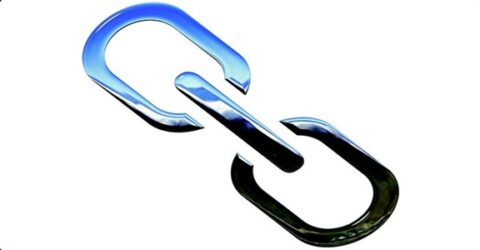What are hyperlinks, and why do they matter?
We examine what are hyperlinks used for and how they act as the glue which holds the internet together.

Like many aspects of the internet, we take hyperlinks for granted.
Being able to seamlessly move between webpages and websites is second nature nowadays.
Yet hyperlinks represent a remarkable piece of coding ingenuity. Without them, the internet would be far more difficult to navigate.
It would more closely resemble the old Ceefax and Oracle data services piped to our televisions during the late 20th century, where changing pages required direct user instruction.
Hyperlinks also have a huge influence on search engine optimisation (SEO).
A site’s perceived value (and proximity to the top of future search results) increases with every reputable third-party website link to it.
So what are hyperlinks used for, and how do they connect the internet together?
The missing link
The internet has existed since the late 1960s, but it was Sir Tim Berners-Lee’s vision of a worldwide web of interlinked webpages two decades later that gave hyperlinks wings.
The concept of electronic links between otherwise unrelated digital resources also traces its origins back to the Sixties.
Sir Tim merely refined the concept – one-way directional traffic that changes the content displaying on your screen.
Notably, he hasn’t taken credit for the choice of underlined blue text, which stands out amid a swathe of monochrome text and subconsciously draws the user’s eye towards it.
It’s the responsibility of modern web browsers (and device-specific programs like antivirus software) to identify potentially malicious links which might be sending people to dodgy locations.
These sites might host drive-by download malware, dangerous keystroke-logging spyware, or simply low-quality content and spammy hyperlinks to sites of dubious moral virtue.
The science behind the clicks
When your mouse moves over a hyperlink, the icon changes from an arrow or an uppercase I to a pointing finger.
The destination web address usually displays somewhere on screen. In Microsoft Edge, it appears at the bottom left corner of the screen.
Clicking the link instructs your web browser to relocate to the new address, which might be another page on the same website or a different site altogether.
A hyperlink can connect to any page on the Surface Web, usually replacing the content currently being displayed but occasionally launching in a separate web browser window.
Although hyperlinks were originally intended to be two-way, Sir Tim created one-way links. The only way to retrace your footsteps is by clicking the Back button on your browser.
Searching for answers
The adoption of hyperlinks rocketed in the Noughties, when search engines began treating inbound hyperlinks to a website as a vote of confidence in a site’s quality.
The owners of website A wouldn’t willingly direct their hard-won site visitors to website B unless they believed it was a quality resource.
Particular weight was placed on inbound links from academic websites – which tend to have the .ac abbreviation before the top level domain indicating their country of origin.
An entire industry quickly congealed around gaming the system, with link farm websites containing thousands of links to websites who paid nominal sums for their presence.
Even after link farms were effectively abolished by changes to search engine algorithms, inbound links to your own website remain vital to maximising its SEO value.
This has underpinned concepts like affiliate marketing and guest blogging, but obviously it requires decent quality for a third-party website to surrender traffic to your platform.
Internal links (such as the ones peppering this article) also offer SEO value, directing people to other relevant resources on the same website.






